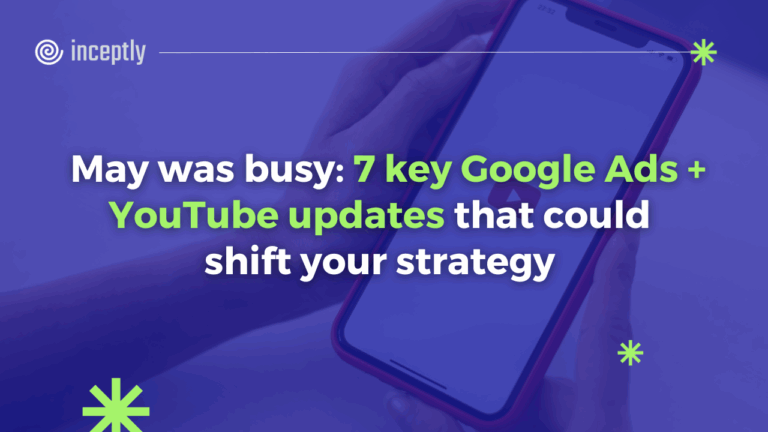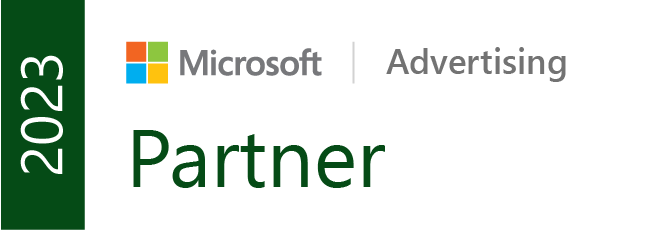
The second half of May brought a flurry of impactful updates across Google Ads and YouTube—some that unlock long-requested transparency, others that introduce new ad formats or targeting mechanics. If you’re running any kind of direct response campaigns, these updates could shift how you bid, track, and even time your creatives.
Want to brainstorm with our team on new ways to scale your business with YouTube Ads (and other performance video platforms)?
Join us for a free YouTube ad brainstorming session👇
Let’s break down the most important changes:
1. Channel-level reporting in PMax is finally here ✅
Until now, Performance Max campaigns operated as a black box. Advertisers couldn’t tell if their budget was going to Search, Display, YouTube, or Gmail placements—unless they used custom scripts or third-party tools.
That’s changed.
Google has started rolling out channel-level reporting directly inside the PMax campaign view. You can now see how each channel performs on its own, which means better allocation decisions, more granular testing, and stronger creative matching.
Use case tip: If YouTube is your top performer inside PMax, consider splitting it into its own campaign with dedicated creative and bidding.
2. “Peak Points” ad targeting gives you smarter timing on YouTube 🕒
Google is experimenting with a new AI-powered feature called Peak Points—designed to help YouTube advertisers hit the exact moment when viewers are most likely to take action.
These aren’t just dayparting rules. Peak Points use historical behavior and real-time signals to identify the best time to show a YouTube ad to a specific viewer. It’s predictive, personalized timing.
If it rolls out fully, this could help you increase conversions without raising bids or changing your targeting. It’s like machine-learning-powered ad scheduling.
3. YouTube product ads now show “Store Pickup” labels 🛍️
Local intent meets YouTube shopping.
YouTube product ads (connected to Google Merchant Center feeds) can now include store pickup labels if inventory is available nearby. This bridges online ads with offline fulfillment—giving brick-and-mortar advertisers a new reason to test YouTube.
Who should care: Brands with physical locations or local distributors can now advertise nationally while pushing local pickup.
👉 Full article on store pickup in YouTube ads.
4. Stricter advertiser verification for debt services in six countries 📜
Starting now, any advertiser promoting debt settlement or credit repair services in the U.S., Australia, India, Ireland, South Africa, and the UK must complete a two-step verification process.
This includes verifying your organization and proving eligibility for debt-related ad categories.
This change is aimed at improving trust and filtering out bad actors—but if you’re in these verticals, it could temporarily disrupt campaign approvals.
5. New AI tools to boost measurement & first-party data strategies 📊
Google’s pushing hard on first-party data—and its latest tools reflect that.
They’ve launched:
Smarter incrementality testing with lower spend requirements
Deeper cross-channel attribution in GA4
A revamped Data Manager to collect and activate first-party data from multiple sources
These tools help advertisers better connect ad spend to revenue—especially when attribution is murky across devices and platforms.
6. Smart Bidding gets a new “Exploration” mode 🧠
There’s now a new Smart Bidding feature in testing called Exploration. When enabled, it temporarily relaxes your existing bid limits (like CPA or ROAS targets) in controlled tests to identify potentially better-performing auction opportunities.
It’s not a free-for-all. The system reverts back to your original targets after gathering learnings—but it can help uncover high-value conversions your current strategy might be missing.
Think of it like a built-in, controlled bid test.
👉 More on Smart Bidding Exploration here.
7. YouTube’s “Pause Ads” are now live ⏸️
This one’s subtle—but important.
YouTube has started rolling out pause ads on connected TV (CTV) devices. These are static ad units that appear when a viewer pauses a YouTube video.
They’re unobtrusive but sticky—like mini billboards for your brand during idle moments.
Why it matters: If you’re running awareness or CTV-focused campaigns, this gives you a new low-friction impression opportunity.
🧠 Final thoughts
Google is quietly giving advertisers more control—and more creative opportunities—especially across PMax, YouTube, and connected TV. Whether you’re running lead gen, eComm, or content-based campaigns, these tools let you go deeper on optimization and smarter on targeting.
As always, keep testing.
Until next time,
The Inceptly Team
Want to brainstorm with our team on new ways to scale your business with YouTube Ads (and other performance video platforms)?
Join us for a free YouTube ad brainstorming session👇
Want more content like this?
Don’t miss out on the latest news and updates from the world of Direct Response advertising! Subscribe to our newsletter today 👇
Like this post? Let's continue the conversation!
Get in touch with us by shooting us a quick email or tagging us on LinkedIn or Instagram, and sharing your thoughts. Your feedback helps us keep our blog relevant and interesting.
Get Our Newsletter
Need Help?
Get in touch with us for an insightful evaluation of your ads + actionable tips to help amp up your direct response revenue



